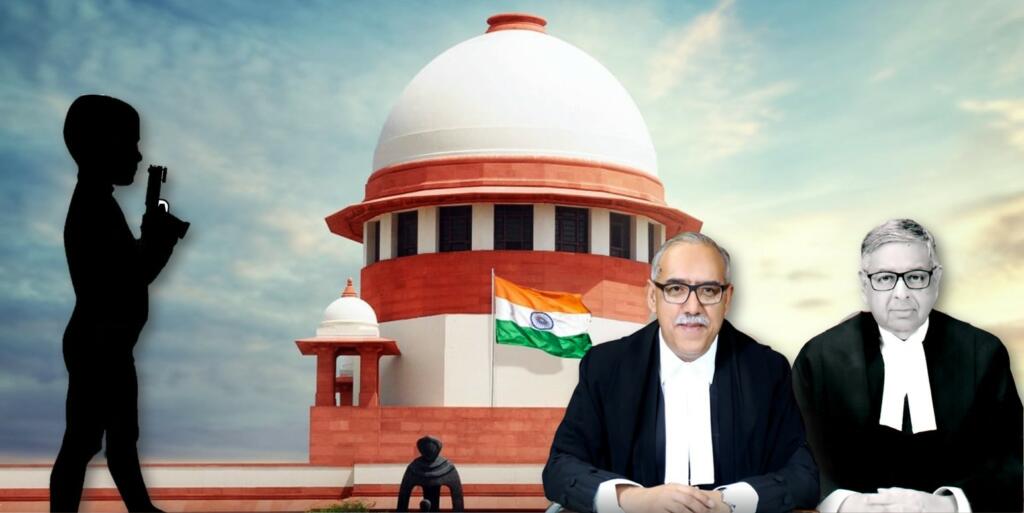The social order of India is getting transformed owing to technological and economic boost in the past decades. The enhanced technology and available means have led to an alarming upsurge in Juvenile crime rate. The abundant information coming from varied sources is corrupting the minds of the youths throughout the nation. Thus, to provide for the care, protection, treatment, growth and rehabilitation of neglected and deviant youths, the Parliament enacted the Juvenile Justice Act of 1986.
But, the Delhi gang rape of 16th December, 2012, brought to light the limitations of the legislation which proved helpless in not only deterring the crime but also failed to meet the ends of justice to the victim. Further, despite subsequent amendments, the law still suffers from the fallacies of infallibility.
Development of the Juvenile Justice Legislation in India
In India there was no pan India juvenile justice legislation in the pre-Independence era. Certain states had their own enactments, like the Madras Children Act, 1920. In the 1960s, the Union government enacted the Children Act of 1960. But this was only applicable to Union Territories and not the States. Thereafter, in Sheela Barse (II) and others vs. Union of India the Apex Court in the order dated August 5, 1986, felt the desirability of having a uniform pan-India legislation on various provisions relating to children.
The progressive stance of the judiciary was facilitated by the international advancement taking place at the time with the adoption of the United Nations Standard Minimum Rules for the Administration of Juvenile Justice, famously known as the Beijing Rules, on 29th November, 1985, by the UNGA. Consequently, after the adoption of the Beijing Rules, India enacted the Juvenile Justice Act, 1986, to provide a comprehensive piece of juvenile justice legislation to the nation.
The Juvenile Justice Act, 1986, and thereafter, the Juvenile Justice (Care and Protection of Children) Act, 2000, were the primary legal framework for juvenile justice in India. The legislations were further amended in 2006 and 2010. However, the major wave of shock and criticism of the juvenile justice legislation hit during the Nirbhaya Gang Rape incident of 16th December, 2012. The law attracted nationwide criticism owing to its helplessness in sufficiently prosecuting the heinous crimes of juveniles.
Subsequently, the Juvenile Justice Bill, 2014, was passed by the Parliament in December, 2015 and came into force from 15th January, 2016. Despite, these progressive amendments the law still suffers from significant loopholes, as can be evident in the recent case of Shilpa Mittal v. State of NCT of Delhi.
Factual Backdrop of the Shilpa Mittal case
In the instant case, a juvenile ‘X’, aged between 16 to 18, is alleged to have committed an offense punishable under Section 304 of the Indian Penal Code that provides a maximum penalty of imprisonment for life or up to 10 years and fine in the first part and imprisonment up to 10 years or fine, or both in the second part, with no minimum prescribed sentence.
The juvenile is alleged to have caused the death in a motor vehicle accident. At the time of occurrence, the accused was above 16 years but below 18 years of age.
The Juvenile Justice Board held that juvenile ‘X’ has committed a heinous offense and therefore, should be tried as an adult. The appeal filed to the Children’s Court was also dismissed. Thereafter, the juvenile ‘X’, through his mother approached the High Court of Delhi. The High Court held that there was no minimum sentence prescribed for the offense in question, and the said offense did not fall within the ambit of ‘heinous offense’ under Section 2(33) of the Juvenile Justice Act, 2015. Accordingly, the present appeal was filed before the Apex Court.
Prominent Issue before the Apex Court
The extremely important and prominent issue before the Apex Court in this instant case was “Whether an offense prescribing a maximum sentence of more than 7 years imprisonment but not providing any minimum sentence, or providing a minimum sentence of less than 7 years, can be considered to be a ‘heinous offense’ within the meaning of Section 2(33) of The Juvenile Justice (Care and Protection of Children) Act, 2015?”
Dictum of the Apex Court
The Division Bench comprising Justice Deepak Gupta and Justice Aniruddha Bose came to the conclusion that it cannot be said that the intention of the Legislature was to include all offenses having a punishment of more than 7 years in the category of ‘heinous offenses.’
The Bench opined that ‘when the intention of Legislature is unclear, the Courts cannot add or subtract words from the statute to give it a meaning which Court feels would fit into the scheme of things.’
The Bench faced the conundrum of deciphering the intention of the Legislature after analysing Section 2(33) read along with Sections 14, 15 and 19 of the juvenile legislation. The Court observed that the Legislature should have clearly spelt out the provisions in the Act.
Further, the Bench held that, there is an unfortunate gap in the provision which cannot be filled by the judiciary. Thus, suggesting that the Legislature should take the call in this matter, the Bench in exercise of its powers conferred under Article 142 directed that all children who have committed offenses falling in the 4th category, that is to say, where the maximum sentence is more than 7 years imprisonment but no minimum sentence or minimum sentence of less than 7 years is provided, shall be dealt with in the same manner as children who have committed ‘serious offenses’ within the meaning of the Act and till Parliament takes the call on the matter.
Support TFI:
Support us to strengthen the ‘Right’ ideology of cultural nationalism by purchasing the best quality garments from TFI-STORE.COM
Also Watch:
https://www.youtube.com/watch?v=sRz3tIP58pQ
